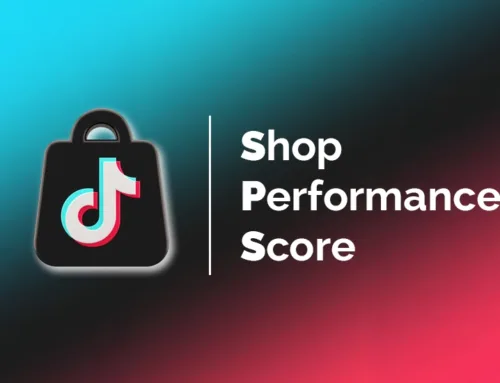Social commerce, or social selling, is a major development in online commerce that integrates social networks into the act of purchasing. It’s no longer just a question of using these platforms to promote products, but of enabling consumers to buy directly from these spaces, without leaving their news feed. Facebook, Instagram, TikTok and Pinterest, among others, have developed functionalities dedicated to this new mode of consumption, transforming social interactions into commercial opportunities.
What is Social Commerce?
Social commerce refers to all the practices that enable users to buy directly via social platforms, without having to leave their application. It’s no longer just a promotional showcase, but a genuine point of sale integrated into the digital ecosystem of social networks. Social commerce is thus based on a fluid, immersive approach. Unlike traditional e-commerce, where purchases are made on a separate merchant site, social commerce enables users to discover a product, read reviews, ask questions and buy in just a few clicks, without having to switch applications.
It’s easy to see that one of the main advantages of social commerce is that it simplifies the purchasing process. Traditionally, consumers had to go through several stages before purchasing a product: discovery on a social network, search on a search engine, visit to an e-commerce site, addition to the basket, and finally validation of the purchase. With social commerce, these steps are condensed into a single experience, making purchasing more spontaneous and intuitive.
Instagram Shopping and TikTok Shop are good examples of this trend. Here, brands can create integrated stores, present their products in catalog form and enable users to buy without leaving the platform. TikTok Shop takes this logic a step further by integrating direct affiliate links into videos and lives, encouraging impulse buying based on the influence of content creators.
The key role of content creators and communities
Influencers play a central role in social commerce. Thanks to their ability to engage their community, they recommend products in a more authentic way than traditional advertising. Consumers, sensitive to the opinions and recommendations of their peers, are more inclined to buy when an influencer they follow promotes a product. There are two main ways of doing this:
Shoppable videos, which enable consumers to buy products directly from a video, are enjoying dazzling success. One example is TikTok Shop, which makes it easy for designers to integrate affiliate links to products.
Live shopping, which is booming in Europe, illustrates this trend. In these live sessions, content creators and brands present products, answer questions and offer exclusive promotions. This interactive format recreates an experience similar to in-store sales, but on a grander scale.
Social Commerce, a more spontaneous and engaging purchasing experience
One of the main benefits of social commerce for brands is that it encourages more spontaneous purchases. Users often discover products as they browse, influenced by algorithms that suggest relevant content based on their interests.
Features such as “Buy Now” buttons, product pins on Pinterest, shopping tags on Instagram or shoppable videos on TikTok Shop facilitate immediate conversion. This approach reduces the traditional steps in the customer journey and lowers the risk of cart abandonment.
Why is Social Commerce so attractive?
Several factors explain the rise of social commerce:
– A more engaging experience: unlike traditional e-commerce sites, social networks offer continuous interaction between brands and consumers.
– Peer influence: the opinions, comments and recommendations of designers play a crucial role in the purchasing decision.
– Simplified purchasing: by reducing the number of steps required to complete a purchase, platforms reduce the shopping cart abandonment rate.
– Ultra-precise targeting: thanks to the algorithms and data collected by the platforms, brands can offer ultra-personalized products, increasing the relevance of their offers.
The different formats of Social Commerce
Social commerce isn’t just a simple buy button. It takes many forms, depending on platforms and brand strategies:
- Integrated stores: Facebook Shopping, Instagram Shopping and Pinterest Shopping, TikTok Shop allow brands to create virtual shop windows directly accessible from their profile.
- Live Shopping: inspired by TV shopping shows, Live Shopping allows consumers to buy products live while interacting with the designer.
- Product tags: present on Instagram and Pinterest, they allow you to identify and buy a product with one click from a publication.
- Viral challenges and trends: TikTok exploits this dynamic to encourage users to discover and buy products thanks to videos by content creators.
The challenges of social commerce for brands
Social commerce is forcing brands to rethink their digital strategy. It’s no longer enough to have a high-performance e-commerce site: it’s now necessary to be present on the right platforms and offer a fluid, engaging shopping experience.
This implies optimized content production (photos, videos, customer reviews), regular interaction with the community and effective collaboration with influencers. In addition, brands need to leverage social network advertising tools to effectively target consumers according to their behaviors and interests.
Social commerce is redefining the way consumers discover and buy products. By combining social engagement, influencer recommendations and ease of purchase, it transforms social networks into veritable marketplaces. For brands, it represents an essential strategic opportunity to capture a connected audience and boost sales.
1. Create engaging, relevant content
Brands need to produce content to capture consumers’ attention, particularly by collaborating with creators. Interactive videos, tutorials, unboxing and live demonstrations are all formats that encourage engagement and conversion.
2. Focus on middle, micro and nano influencers
While major celebrities remain influential, nano, micro and middle-influencers are gaining ground. Their proximity to their communities and high engagement rates make them ideal partners for promoting products authentically.
3. Harnessing the power of data
Social networks offer a wealth of information on consumer preferences and behaviors. By analyzing this data, brands can fine-tune their offers and propose ultra-personalized experiences.
4. Integrating Social Commerce into an omnichannel strategy
Social commerce does not replace traditional e-commerce, but complements it. An omnichannel approach, combining e-commerce sites, social networks and, where appropriate, physical stores, makes it possible to offer a fluid and coherent shopping experience.
If you would like to implement a Social Commerce strategy, please contact our experts. Effinity is a TikTok Shop Partner. We can help you get the most out of selling on this platform.
Mis à jour le 28 May 2025
Mis à jour le 28 May 2025




